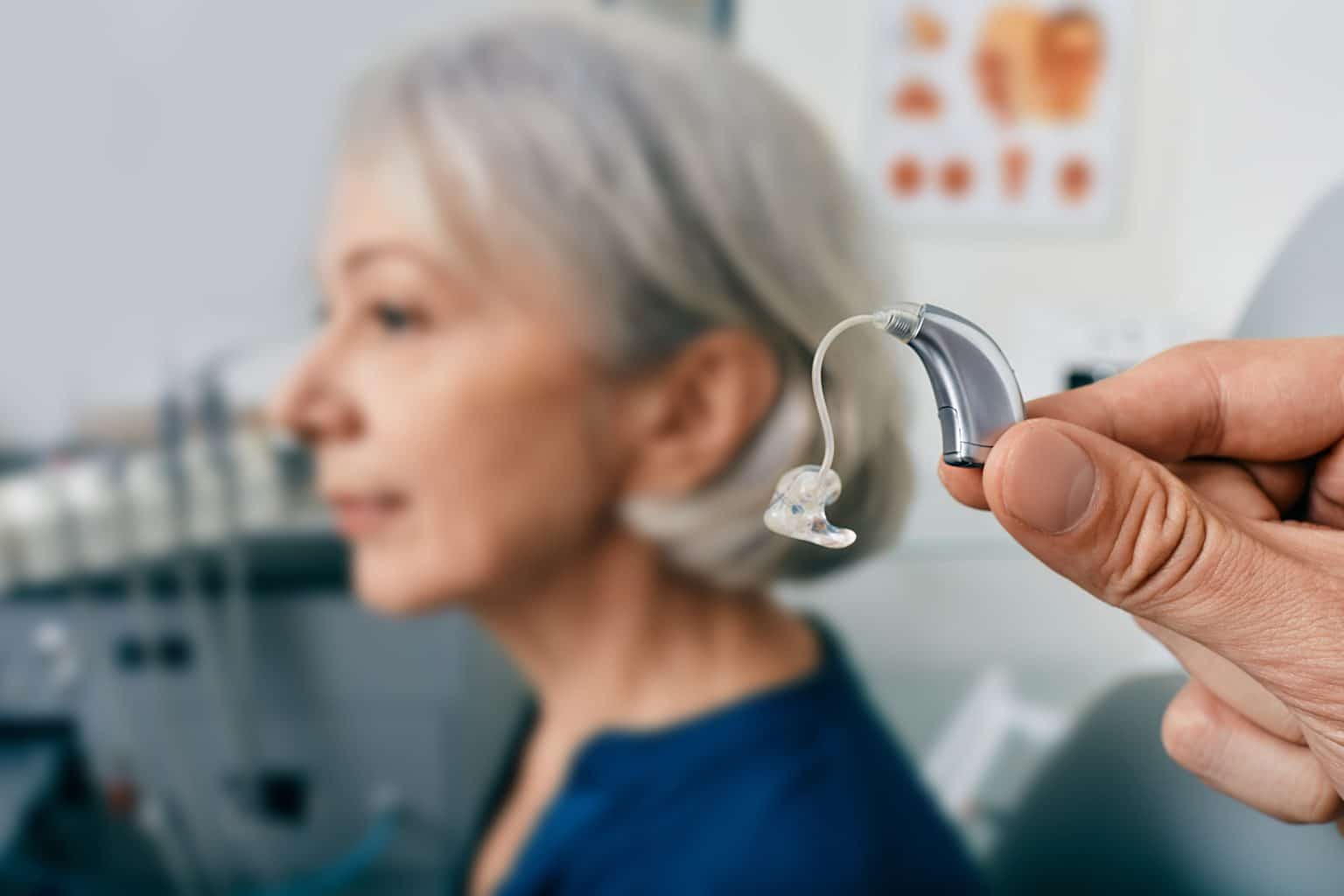According to a 2022 study, “Data from the MarkeTrak 2022 survey indicate most hearing aid owners report regular quality-of-life benefits from hearing aids, even more than in previous surveys.”
If you’re considering getting hearing aids, you may be wondering what the process entails. Below we review what to expect during a hearing aid fitting.
Review of Test Results

After your hearing test, the results will be plotted on an audiogram, which is a visual representation of your hearing loss. Then your audiologist will go over the results with you, using your audiogram as a visual tool so you can see what areas specifically you need improvement in.
Lifestyle Needs Assessment
After your audiologist reviews your type and degree of hearing loss with you, they’ll conduct a lifestyle needs assessment. During this assessment, you’ll talk with your audiologist about what types of listening situations you find yourself in. This is because, if two people both have moderate hearing loss in both ears, but one person mostly does quiet activities at home while the other frequents happy hour at Cattleman’s Restaurant on Hilltop Drive, the second person will need a more advanced hearing aid than the first.
Aesthetic Preference Discussion
Many people want their hearing aids to be discreet, though others prefer that they stand out. You can talk to your audiologist about whether you want your hearing aid to be worn in or over your ear, as well as if you’d like your hearing aid to match your skin or hair or for it to be a bright color. While, in some cases, only a specific type of hearing aid will provide the right amount of amplification, your audiologist will certainly try to keep your aesthetic preferences in mind when selecting a hearing aid.
Hearing Aid Selection
Next, your audiologist will select a hearing aid based on the information from your hearing test and your discussions.
Hearing Aid Programming
Your audiologist will then program your hearing aid to the exact specifications indicated on your hearing test.
Follow-Up
It’s essential that you attend all follow-up visits. Because your hearing test took place in a soundproof booth rather than the real world, you will likely find that you need the programming to be adjusted on your hearing aids after you leave your audiologist’s office. This is what follow-up visits are for. For more information or to schedule an appointment with a hearing expert, call Audiology Associates of Redding today.
[related-posts]